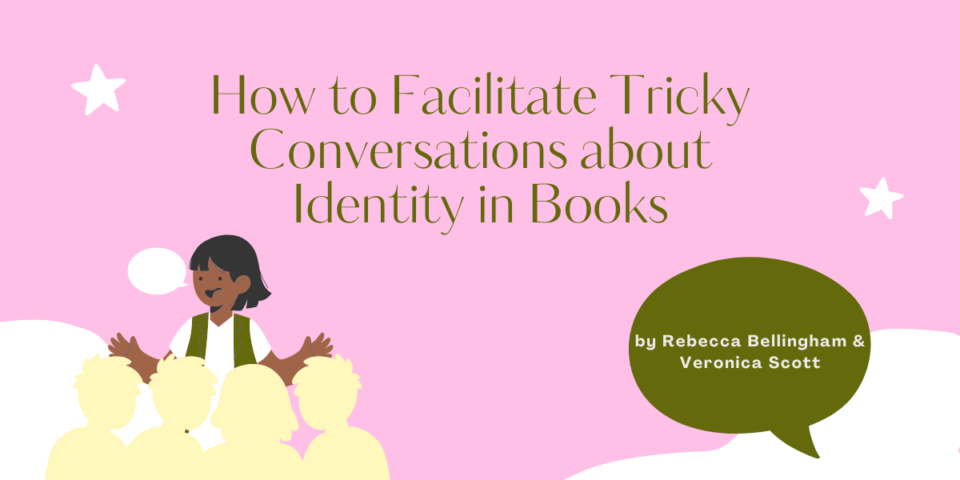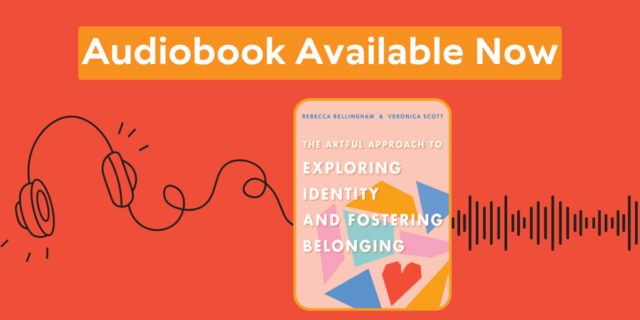
The following is an adapted excerpt from The Artful Approach to Exploring Identity and Fostering Belonging by Rebecca Bellingham and Veronica Scott.
Who Are Your Students in Your Room?
Keep the dynamics of your room and your students foremost in your mind whenever you choose to read aloud a book. In the same way that we are mindful of how to pace a read-aloud to meet the reading needs of each student, stopping to pause to provide background knowledge or check for understanding, we are also mindful of how we are centering content that explores identity.
There are lots of books that affirm identity in straightforward ways, but some books require a different level of preparation because of the complex topics they address. Books like Amy Wu and the Perfect Bao by Kat Zhang (2019), Festival of Colors by Kabir Sehgal and Surishtha Sehgal (2018), and Thank You, Omu and Saturday by Oge Mora (2018 and 2019) are terrific examples of books that tell an uplifting story without also trying to address a challenge related to identity in explicit, or even implicit, ways. But books that intentionally affirm historically marginalized identities often also address a fuller historical context—which might mean surfacing stereotypes and painful history. When books surface honest history (like Fry Bread by Kevin Maillard [2019] or On the Trapline by David A. Robertson [2021]) or challenge stereotypes (like Pink Is for Boys by Robb Pearlman [2021]) they are often doing a few things at once. For example, Hair Love by Matthew A. Cherry (2019) is a love letter to Black hair, but it also pushes back against white, Eurocentric beauty norms at the same. Eyes That Kiss the Corner by Johanna Ho (2021) serves a similar purpose by celebrating Asian identity while also disrupting beauty norms. Because of the multiple layers that exist in some of these books, we need to be prepared to facilitate the conversations, questions, and responses that emerge around any number of issues related to the story—and to always keep our actual students in mind as we do this. In short, we should handle these read-alouds with care.
Facilitating Difficult Conversations
After sharing a book that addressed unkind words about identity, we invited students to write down their thoughts, feelings, or questions. After a few minutes of reflection, an Asian American student called Rebecca over to share about a time when she had experienced a hurtful comment about her eyes. Another time a Black student shared on his note card that he had been called a hateful term during a basketball practice. Years of facilitating these conversations has helped us anticipate the vulnerable sharing that can be tricky to navigate as a teacher. As a result, we intentionally craft reflections during these read-alouds that aren’t whole-group or even partner share outs. However, we can never control what students might say out loud. When this happens, and a student brings something to light and the whole class is watching, it can feel uncomfortable and the reflex might be to shut the conversation down.
Instead, pause. Think about how to add some guardrails around the discussion (you might recenter a specific community agreement or provide a whole-group reminder) without signaling that talk about identity is inappropriate territory. Before you respond to the moment, be mindful of your tone. Remember that kids don’t always have the sophisticated, contemporary language we might use ourselves when discussing marginalization and that they’re likely just thinking out loud and asking honest questions, which is a sign that you’ve built a trusting classroom community and that the read-aloud is resonating with your students.
Finally, we need to be mindful about how to support children who are not in the majority, or who might feel uncomfortable when a book surfaces stories or issues connected to their identity. Remember that identities are not always visible, so we don’t want to assume that a child’s identity is represented or not by a story that explores or uplifts identity. This is why the beginning of the year matters so much! When we take the time to get to know our students, and the multiple identities they house, we can make informed and nuanced decisions about what, when, or even whether to read a book aloud to the whole class.
Handle With Care Tip: How to Interrupt Tricky Read-Aloud Moments
When a student asks a question or shares a comment that feels problematic, here’s a helpful guide for navigating these kinds of moments:
- Pause calmly.
- Push back without shaming.
- Teach into a skill (maybe the skill of noticing, being an upstander, or other skills that could support the student and group’s growth).



